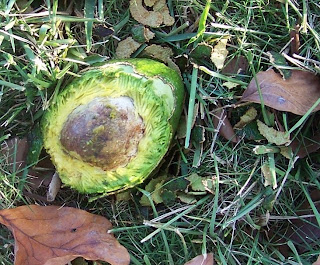
We've had two consecutive years of a bumper avocado crop. Unfortunately, they're not my favorite fruit, but these are a good variety and they'll spread like butter across a sandwich. I've been giving them away to anyone who wants some, but they're still way too many and the squirrels are having a fine old feast.
Last year, I gave some to Sparky. He wolfed them down and got diarrhea in the house, so he's not having any more. Some people I used to know moved, with their skinny black lab, to a house with several avocado trees. The next time I saw the dog, he was easily double the size. I think the owners finally resorted to putting a muzzle on him during avo season.
But why do trees make so much fruit when it only takes one successful germination to replace the parent? I found an answer in a 1990 movie called
Mindwalk, starring Sam Waterston, John Heard and Liv Ullmann. It's kind of a forerunner to
What the #*!$ Do We Know, with just as flimsy a "plot."
Waterston plays a failed presidential candidate who meets up with his poet pal, Heard, at Mont St Michel, off the Brittany coast. The film is all about the conversation they start with Ullmann's character, a Norwegian quantum physicist. It's she who puts forward the hypothesis that the tree -- my avocado -- is part of a much greater system and as such, the abundance of fruit nourishes the system, which in turn protects a new seedling, later to become the replacement tree.
James Lovelock wrapped this up in his
Gaia Hypothesis, which has always appealed to me.















